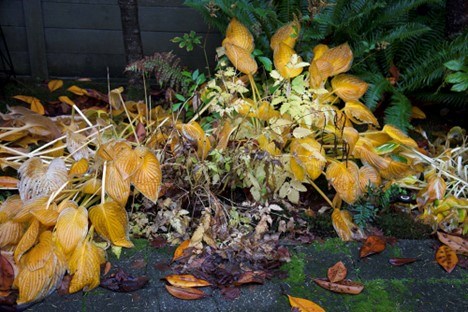While I have been enjoying the beautiful and confusing fall weather, I admit to being frustrated in equal measure. My plants too, are confused.
Such is food gardening into the future of changing climates and adaptation.
The summer-sown seedlings that should be powering down for the long cold winter, have made an impressive run for it, spurred on by warm soil and sunshine. The asparabroc and sprouting broccoli that were cut back one final time for the winter, or so I thought, produced another great basket of lovely soft and nutty shoots for me to blanch and squirrel away in the freezer.
And what is with our dwarf fruit trees, flowering again, in mid October? As grateful as I am for the encore, I am rather done with it all. This chickie and her gardens are ready for rain.
We have transplanted, cold framed and mulched. We have sown broad beans and winter peas. The PVC hoops stand ready to receive the laundered row cover – slightly scarred from previous seasons, but ready none-the-less for battle with the elements – assuming that happens.
The cold frames are propped wide open, so the plants don’t bolt in their still-warm soil.
Adaptation – that word again. Winter gardening through weather anomalies is most definitely about adaptation. There is no one way, or right way, or “the” way, there is only what works in one’s garden in the space and time that one occupies.
Like small children exposed to the elements and social pressures, plants evolve in response to nature and nurture over time. The best we can do is observe and interact, feed them organic goodness and provide a safe, nurturing, wholesome environment in which to grow up big and strong.
Nature, left to her own, does this automatically within a beautiful and complex, interdependent system of resilience and cooperation. The insects, birds, and mammals that, during earlier winters, would have flown the coop by now, are still hanging about. Of course then the gardens respond in kind, to keep them fed and sheltered. How clever.
I expect that winter will arrive suddenly. We are ready for this in our home food gardens, with the fleece and the mulch. The best thing we can do in our perennial gardens is nothing. Leave plants, leaves and seed heads in place to shelter wee things, and provide food for over-wintering birds and small mammals.
This doesn’t come naturally to many, accustomed as we are to neat and tidy. I for one didn’t know that native bees lay eggs in hollow plant stocks, in the ground, and in tiny crevices in duff and leaf litter. Raking or blowing this habitat away, further pressures the already endangered among hundreds of species of native bees.
As a community of North Shore nature lovers, we can change the lens through which we view our established garden habitats, and see them as sanctuary, not merely as ornament. Sitting quietly in the garden, on a frosty morning, with a steaming cup of tea, becomes its own reward for adaptation and perspective shift in attitude. Small birds flitting noisily, darting in and out of pockets of relatively warm air of decomposition trapped between sagging spent stems, feeding on protein-rich insects, come cautiously close as if in thanks for food and shelter.
The shift in attitude among land-care workers locally, is heartening and deserves recognition. Increasingly, I see leaves and fading plants left in place in perennial gardens, left to break down into food, shelter and life-giving hummus. And why not? Toting leaves off-site defies nature’s logic, and can be costly. Leaving leaves – as many as is manageable – to decay slowly as they are eaten by microbes, is beautiful and contributes to a healthy ecosystem.
Following a weekend of municipal elections that determine in very large part, the environmental future of our communities, I propose a moratorium on hyper neat and tidy (and plastic lawn signs). Instead perhaps, we could adjust our perspective about fall cleanup, and use the considerable time saved, to have more conversations, over steaming cups of tea in the garden, watching birds, bees and other wild creatures flit noisily about, as if in thanks.
Laura Marie Neubert is a West Vancouver-based urban permaculture designer. Follow her on Instagram @upfrontandbeautiful, learn more about permaculture by visiting her Upfront & Beautiful website or email your questions to her here.
For a taste of permaculture, click on the YouTube link below:



